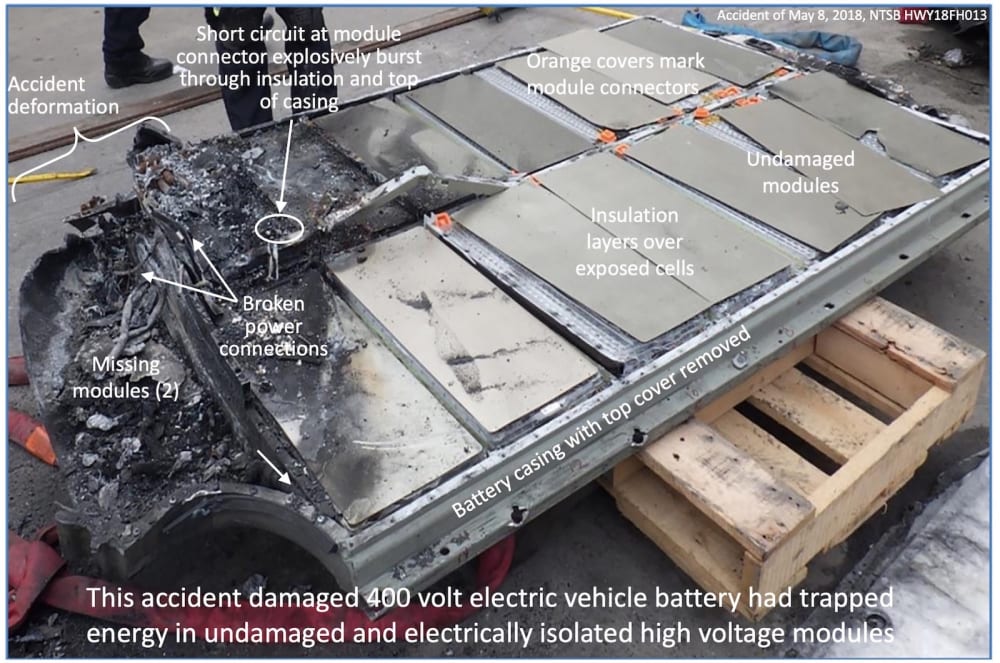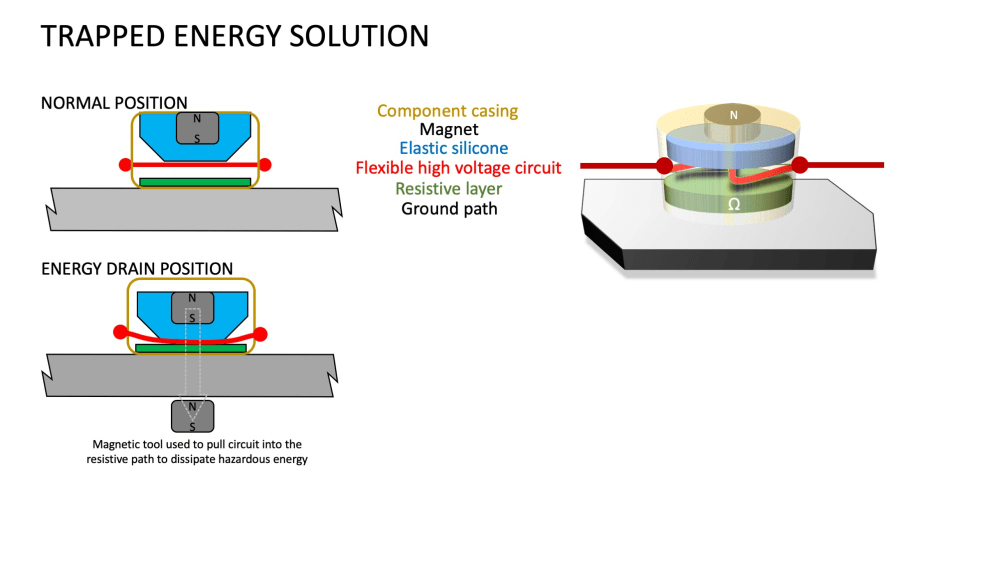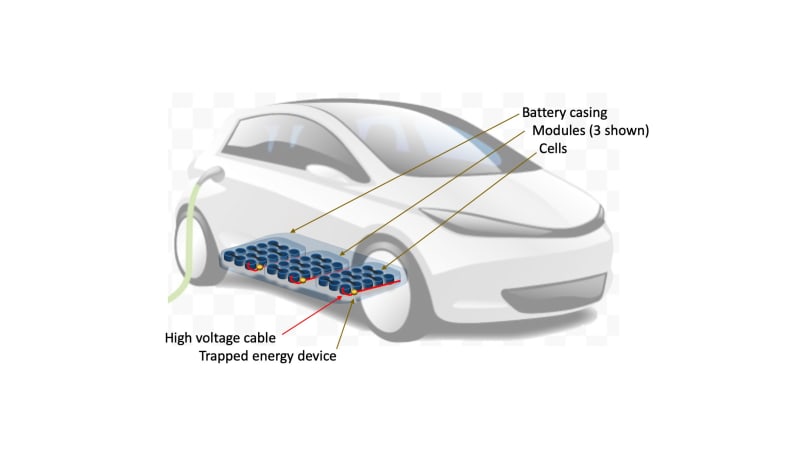Lithium ion and other batteries have become ubiquitous as society moves to re-usable energy yet create a significant new and relatively unaddressed hazard. First responders and others involved with damaged electric vehicle (EV) and energy storage systems (ESS) have found that damage and recycling of batteries can disrupt circuits, isolating portions of a charged battery. The high voltage and kilowatts of power are known as “trapped energy” and modules containing trapped energy in damaged batteries can create explosive short circuits while working with the batteries. (See example accident photo) Battery cases are typically bonded together so that recycling also develops physical deformation as part of the process and may cause internal short circuits.
Large format batteries are collections of multiple modules and in each module is a collection of individual cells. While each cell is typically only several volts, the cells are connected in series to develop the required high voltage and energy. Large batteries are typically contained in protective cases for crash and physical protection, so normal access to the modules and cells may not be possible when an accident mangles the casing and cutting into a damaged battery is the only option. Damage has been found to melt or break through layers of protective insulation so that the slightest shift can allow short circuits of high voltage from isolated modules to release kilowatts of energy in an explosive and extremely hazardous burst.
An existing method for reducing trapped energy is opposed by the battery industry because it destroys the entire battery by flooding it with a saltwater solution. Since batteries are built of numerous expensive recoverable modules and cells, an inexpensive mechanism is required to reduce the very significant hazard posed by potential kilowatts of high voltage and do so without destroying the components.
A potential solution is to add an inexpensive and easily produced component at the positive (+) electrical connection for each module so that trapped electrical energy could be reduced by use of a simple tool outside of the aluminum battery case. The component would consist of a high strength magnet cast into a layer of elastic silicone above a flexible portion of the high voltage circuit. In normal use the high voltage circuit would be separated from a ground path by an air gap above a resistive layer. Placement of a strong magnetic tool at specific locations on the outside of the aluminum case would attract the internal magnets for each module, causing the flexible portion of the high voltage circuit to short to ground through the resistive element.
Note: As the inventor and to encourage adoption, this is being made public without patent or licensing. Acknowledgement appreciated. swaim@howitbroke.com
Like this entry?
-
About the Entrant
- Name:Robert Swaim
- Type of entry:individual
- Patent status:none








